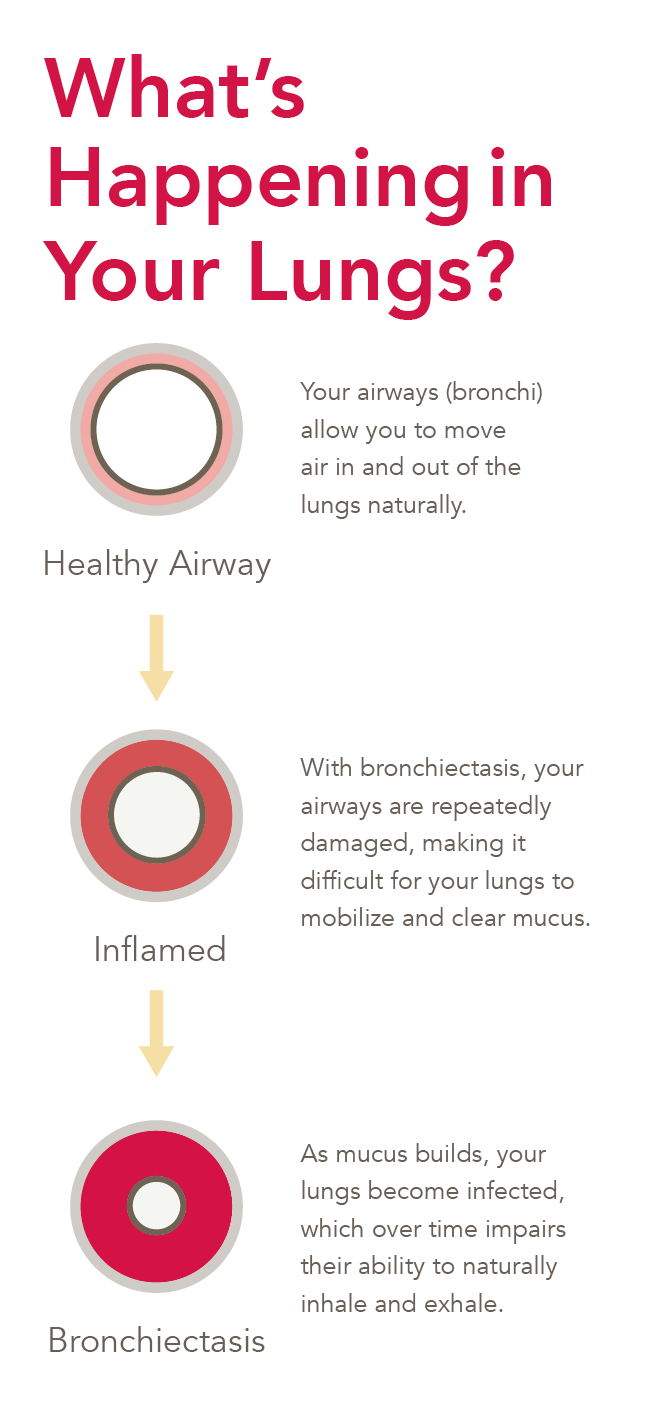
The human body produces mucus every day [1], and more often than not, it works quietly behind the scenes, so it remains unnoticed and we can go about our day.
However, whenever there is a change in temperature or humidity levels, you may start to feel irritation develop in the back of your throat and nasal passageways. You may also experience a similar irritation when your lungs are exposed to pollen, smoke, or airborne germs or dust particles.
When this occurs, your body’s natural reaction is to produce more mucus.
Why We Produce Mucus
Think of mucus production as another one of your body’s defense mechanisms. During cold or dry weather, for instance, your body will produce excess mucus to help warm or moisturize your passageways. Similarly, your body will produce more mucus to help trap and flush out airborne irritants that carry germs or harmful pathogens that we have inhaled [2].
Therefore, it’s safe to say that mucus production is the body’s way of keeping us healthy and protecting us against irritants that can trigger inflammation or infections. However, with more mucus comes more problems—especially when you’re living with a chronic lung condition like bronchiectasis.
Post nasal drip often develops as a result of excess mucus. When mucus is healthy, it’s typically thin and slippery in substance. This allows your body to move it up and out of the lungs; but when your body produces too much mucus, it often becomes thick and sticky [3]. This makes it much harder to pass through the lungs, creating mucus buildup.
When mucus cannot be flushed out, it begins to drain in other areas of the body.
Where Does Post Nasal Drip Go?
As you can tell from its name, this common condition causes sticky mucus to trickle down your throat from your nasal passageway and sinuses. This may cause you to feel the need to clear your throat frequently [4].
In addition to constantly clearing your throat, post nasal drip can also trigger a nagging cough, which may sometimes be dry, unproductive [5], and can often worsen at night [6]. As a result, you may experience a sore, itchy throat or be left with a cough that doesn’t help you break up mucus effectively.
 Can post nasal drip cause wheezing and shortness of breath?
Can post nasal drip cause wheezing and shortness of breath?
Common symptoms of post nasal drip include:
- Nagging cough
- Frequent swallowing
- Frequent sensation to clear throat
- Sore, itchy throat
- Bad breath
- Nausea [7]
Though this condition does not directly cause wheezing or shortness of breath, it can trigger a worsening of similar symptoms if you’re living with a chronic lung condition. Bronchiectasis, for example, can cause individuals to experience chronic cough, shortness of breath, wheezing, inflammation, and recurring respiratory infections.
Due to each cycle of infection, this condition causes the airways to become irreversibly damaged and widened. Over time, this makes it more difficult for your lungs to mobilize and clear mucus independently. As a result, mucus builds up, which in turn, starts the inflammation and infection cycle all over again.
Because post nasal drip develops from mucus buildup, it becomes yet another barrier that makes breathing and clearing mucus from the airways more difficult. This is due to its combination of thick, sticky mucus draining down your throat paired with a nagging cough and sore throat that makes it harder to breathe and swallow normally. In fact, you may experience pain when you try to swallow or clear your throat [8].
Without the ability to break up mucus effectively, the excess mucus and drainage continues to build up, which may worsen other symptoms—such as infection, chronic cough, and shortness of breath—that can impact your quality of life and prevent you from doing the activities you enjoy most.

Keeping Your Airways Clear
Preventing mucus buildup before it starts may help you avoid infections that can trigger symptoms of post nasal drip.
The SmartVest Airway Clearance System is a high frequency chest wall oscillation (HFCWO) therapy device that delivers repeated pulses of air that gently squeeze and release the upper chest wall. The oscillation helps to loosen and propel mucus upward, where it is more easily coughed out.
SmartVest works to prevent mucus buildup and keep your airways clear, so you can manage your chronic condition without it affecting your routine.
If you’re ready to chat now to see if SmartVest is right for you, schedule a time with our Patient Care Advocates, who are also Respiratory Therapists, today or call them directly at 1.855.528.5690!
For additional information on SmartVest, request a patient packet that you can easily share with your doctor at your next appointment. 
Resources
[1] Medical News Today. “Mucus. Where Does It Come from and How Is It Formed?” Retrieved from https://www.medicalnewstoday.com/articles/where-does-mucus-come-from
[2] Cleveland Clinic. “Post Nasal Drip.” Retrieved from https://my.clevelandclinic.org/health/diseases/23082-postnasal-drip
[3] Medical News Today. “What it feels like to have post nasal drip (mucus in the back of the nose and throat) and how to remedy it.” Retrieved from https://www.medicalnewstoday.com/articles/319636
[4] Harvard Health Publishing. “Treatment for Post-Nasal Drip.” Retrieved from https://www.health.harvard.edu/staying-healthy/treatments-for-post-nasal-drip
[5] Medical News Today. “What Can Cause a Dry Cough.” Retrieved from https://www.medicalnewstoday.com/articles/324912
[6] Cleveland Clinic. “Post Nasal Drip.” Retrieved from https://my.clevelandclinic.org/health/diseases/23082-postnasal-drip
[7] Medical News Today. “What it feels like to have post nasal drip (mucus in the back of the nose and throat) and how to remedy it.” Retrieved from https://www.medicalnewstoday.com/articles/319636
[8] Alexis D. Furze MD, FACS, “4 Problems That Can Develop If You Have a Post Nasal Drip.” Retrieved from https://www.drfurze.com/blog/4-problems-that-can-develop-if-you-have-postnasal-drip

